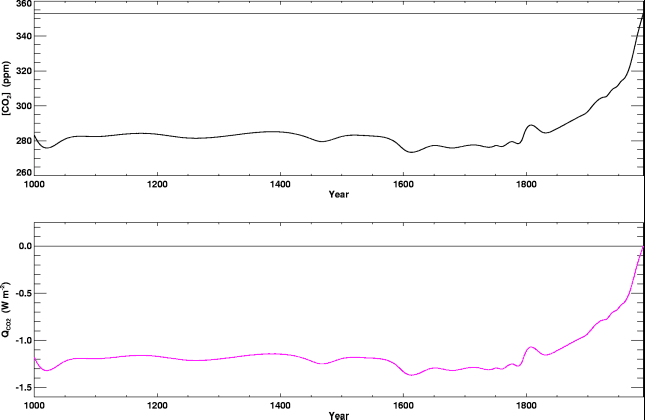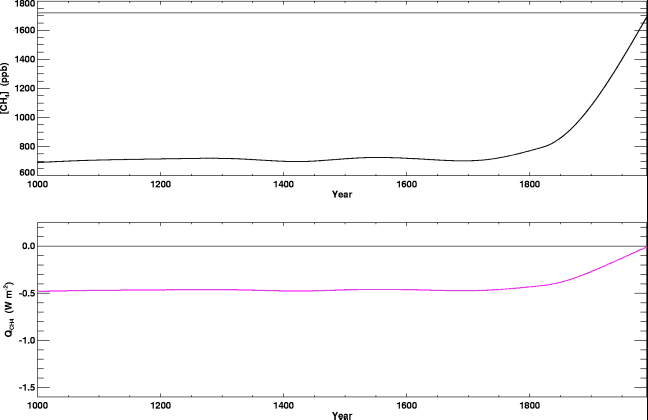The only time-varying natural forcings used in the ECHO-G simulations are solar irradiance changes and short-wave forcing related to volcanic eruptions. The volcanic forcing is implemented by reducing the effective solar irradiance to achieve the desired effect. This is a simplification which neglects differences in the pattern of volcanic short-wave between eruptions and between volcanoes and solar irradiance variations, and neglects absorption of short-wave and long-wave radiation by volcanic aerosols that can lead to stratospheric warming.
The time series shown in the upper panel is the effective solar irradiance used as one of the forcings in the erik simulation, and used after 1756 as the only forcing in the enat simulation. The data files contain separate time series of effective solar irradiance including solar variability and perturbations due to volcanic forcing, which can be summed to yield the time series plotted in the upper panel.
The lower panel shows this irradiance time series converted to a forcing time series by Osborn, Raper and Briffa (2005) (see SO&P publications for reprint).
Annual






 Last updated: October 2005, Tim Osborn
Last updated: October 2005, Tim Osborn